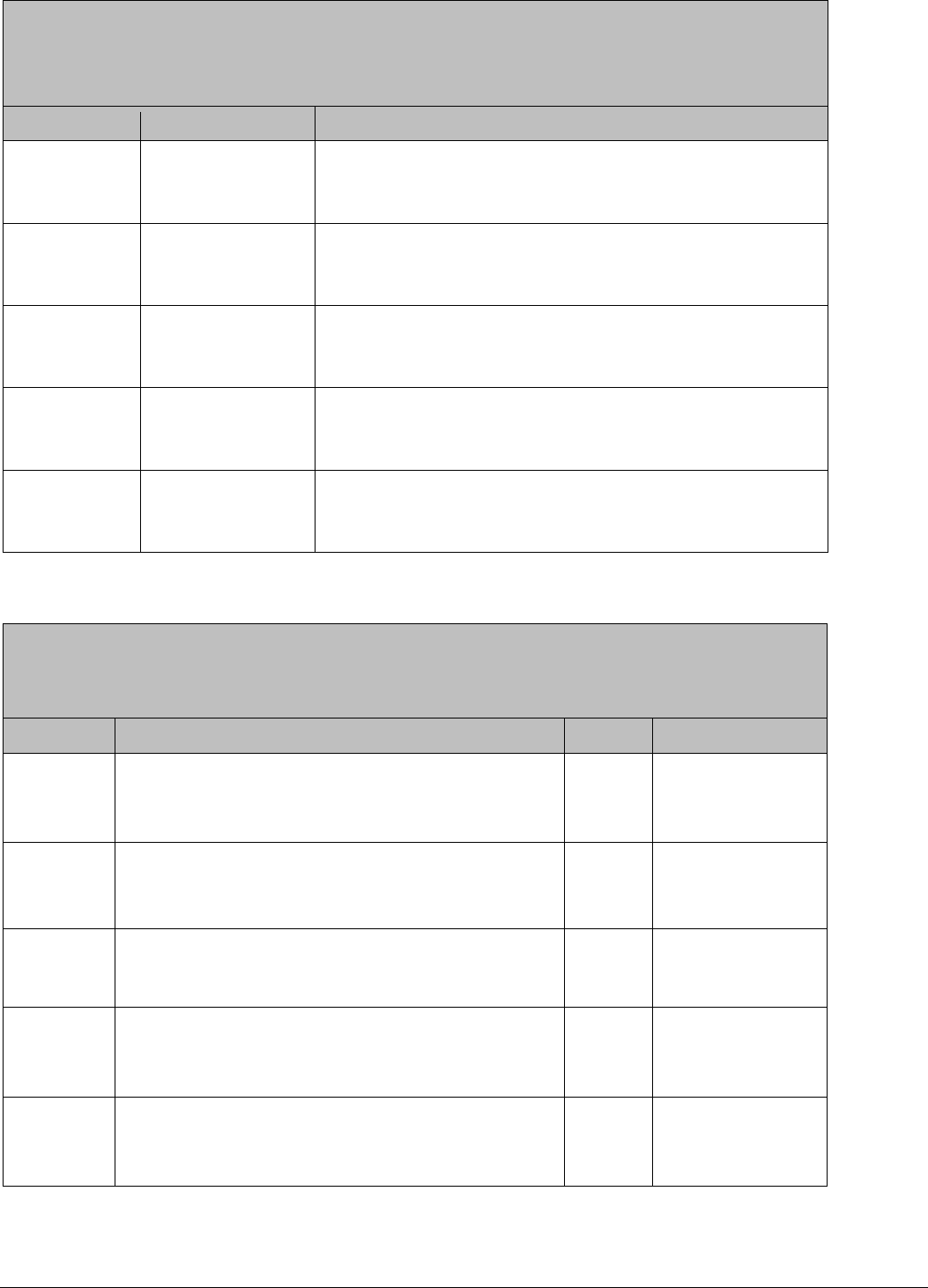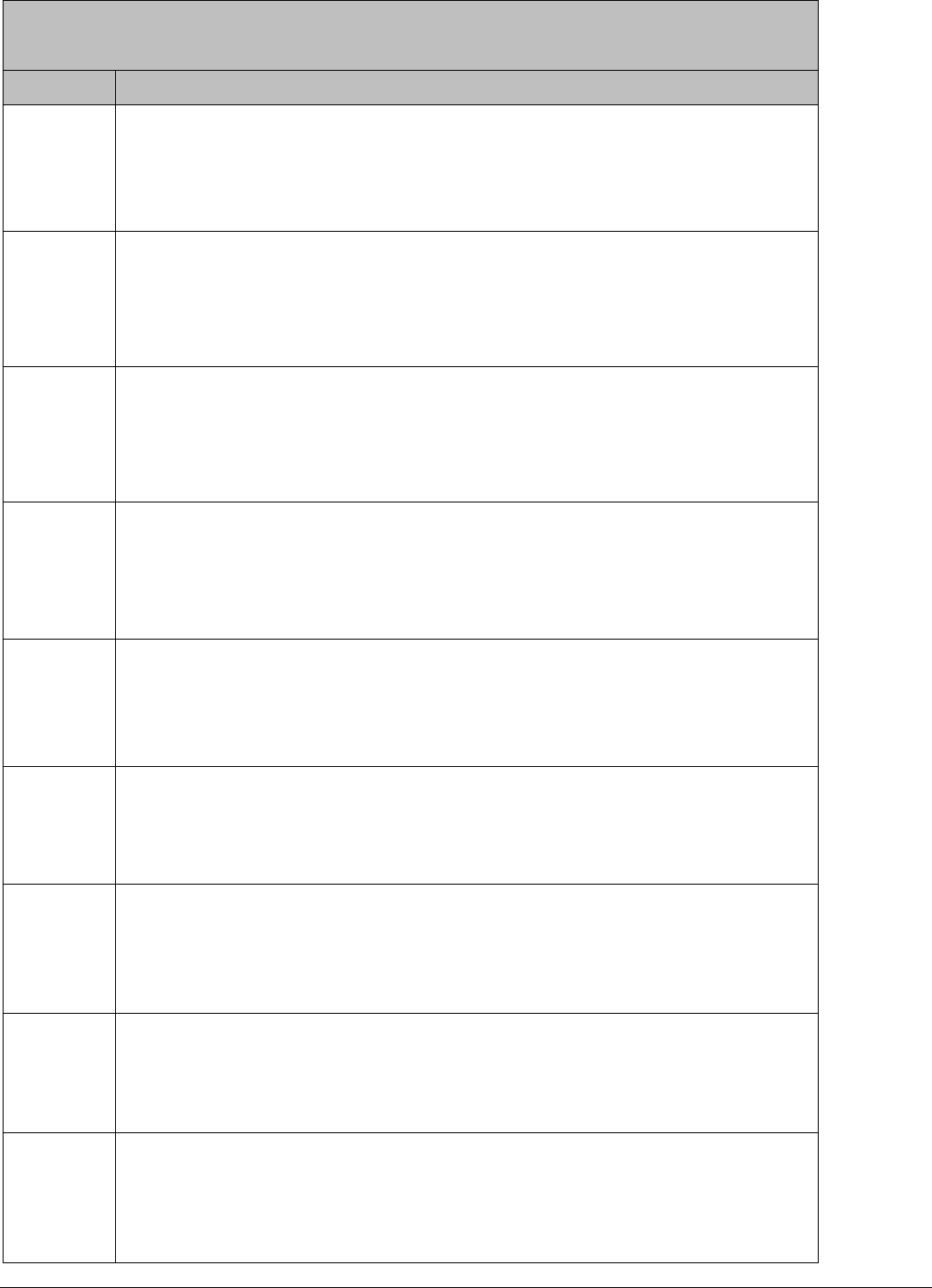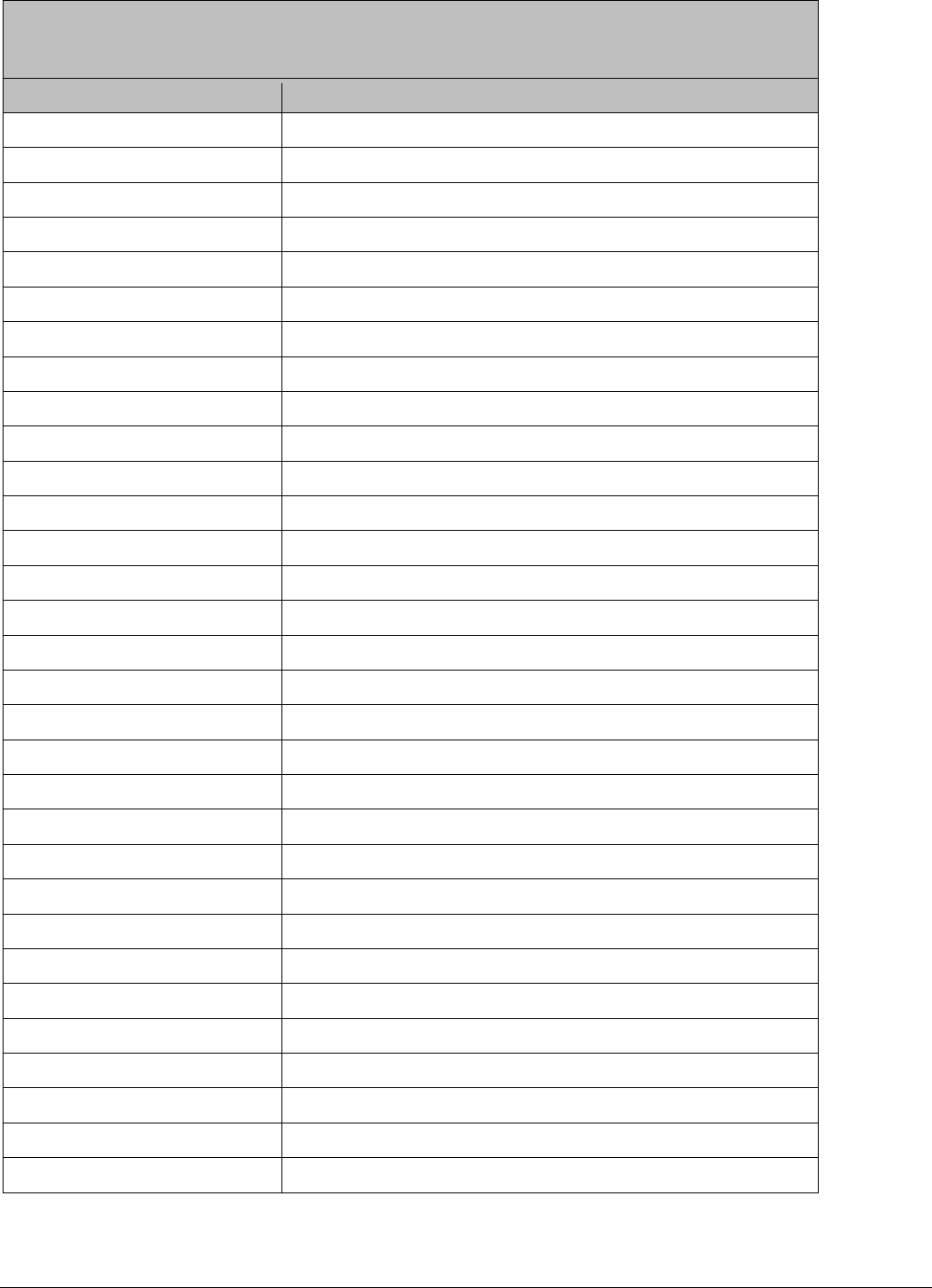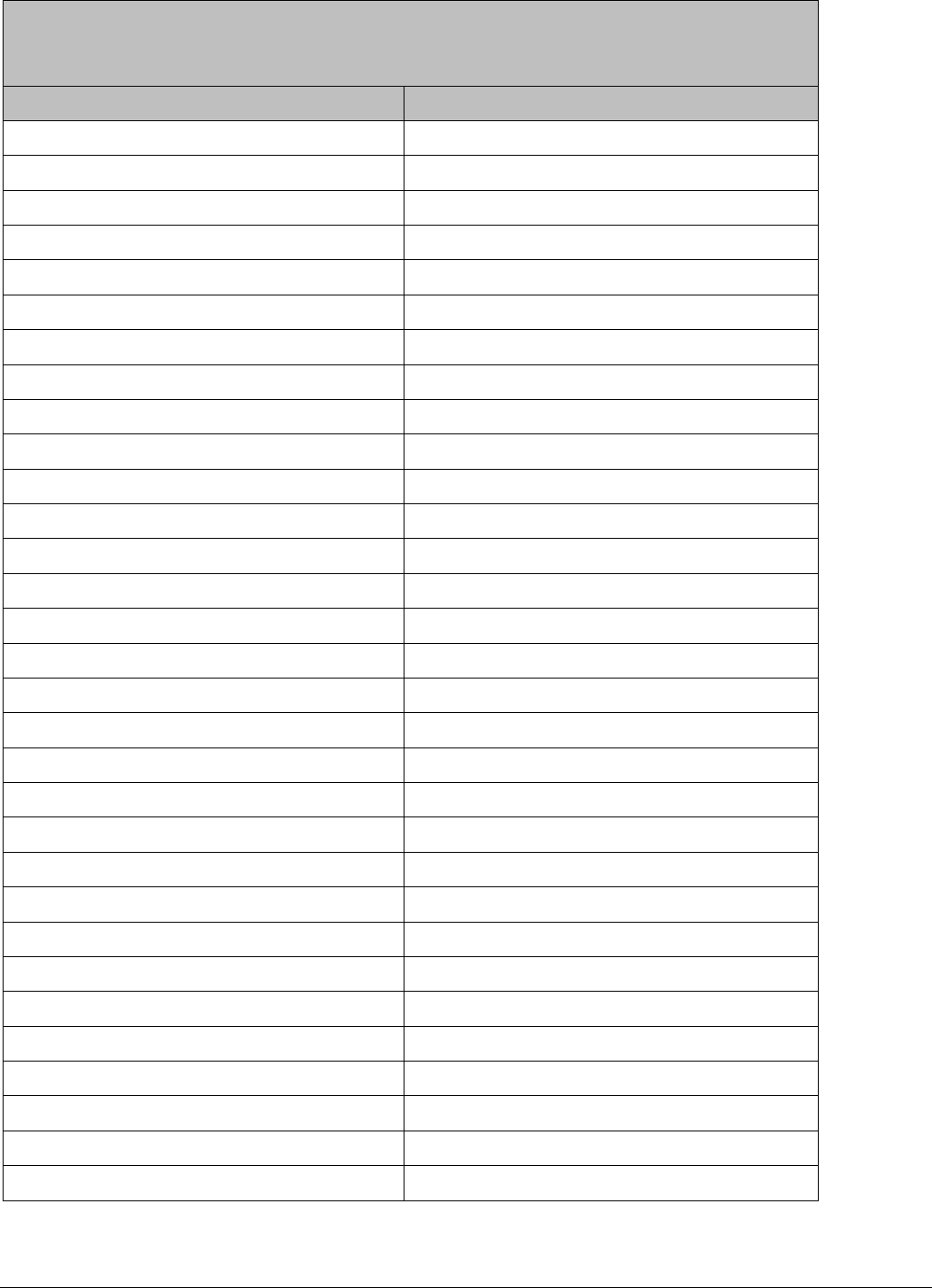
AGILE BUSINESS REQUIREMENTS DOCUMENT TEMPLATE
TABLE OF CONTENTS
1. EXECUTIVE SUMMARY SNAPSHOT 3
2. PROJECT DESCRIPTION 4
3. PROJECT SCOPE 5
4. BUSINESS DRIVERS 6
5. CURRENT PROCESS 7
6. PROPOSED PROCESS 8
7. FUNCTIONAL REQUIREMENTS 9
PRIORITY 10
REQUIREMENTS CATEGORIES (RC1) 10
8. NON-FUNCTIONAL REQUIREMENTS 11
9. FINANCIAL STATEMENTS 12
10. COST AND BENEFIT 13
11. RESOURCES 14
12. SCHEDULE, TIMELINE, AND DEADLINES 15
13. ASSUMPTIONS 16
14. GLOSSARY 17
15. REFERENCES 18
16. APPENDIX 19

AGILE BUSINESS REQUIREMENTS DOCUMENT TEMPLATE
1. EXECUTIVE SUMMARY SNAPSHOT
Provide a brief executive summary (overview of your business requirements) here.
Your executive summary should be a “snapshot” of the purpose of your business requirements, including a brief
description of any analysis, findings, project description, scope, business drivers, proposed process, current process, and
functional requirements. Here are the questions you should answer when writing your business requirements executive
summary:
● What is the goal (purpose) of this business requirements document (BRD)?
● Who is the audience for this business requirements document?

AGILE BUSINESS REQUIREMENTS DOCUMENT TEMPLATE
2. PROJECT DESCRIPTION
In this section, describe the project for which you are writing this business requirements document. Describe the
project’s purpose, what the current process/solution is for the project, what the challenges are, and why you need to
undertake the project.

AGILE BUSINESS REQUIREMENTS DOCUMENT TEMPLATE
3. PROJECT SCOPE
Provide a high-level description of the project’s scope, including a list of project-specific goals, tasks, deliverables, costs,
deadlines -- everything that is “in” and “out” of scope for the project. This information provides team members with
guidelines for the scope of the project, so they can plan and resource accordingly.
IN SCOPE
The following are “in scope” for the project:
● In-scope item 1
● In-scope item 2
● In-scope item 3
● In-scope item 4
● Etc.
OUT OF SCOPE
The following are “out of scope” for the project:
● Not-in-scope item 1
● Not-in-scope item 2
● Not-in-scope item 3
● Not-in-scope item 4
● Etc.

AGILE BUSINESS REQUIREMENTS DOCUMENT TEMPLATE
4. BUSINESS DRIVERS
Enter the reasons (i.e., business drivers) why your business is initiating the project. In short, Why are you undertaking the
project? Examples might include the following:
● Legal requirements
● Cost savings with a more efficient practice
● Updated import/export laws
● Improved efficiency
● Improved sales
● Etc.
BUSINESS DRIVER #1
Provide a detailed explanation for business driver #1.
BUSINESS DRIVER #2
Provide a detailed explanation for business driver #2.
BUSINESS DRIVER #3
Provide a detailed explanation for business driver #3.

AGILE BUSINESS REQUIREMENTS DOCUMENT TEMPLATE
5. CURRENT PROCESS
Provide details of your current process for addressing the primary issue your project attempts to solve. Feel free to
include diagrams, flowcharts, or other visuals to illustrate the current process.

AGILE BUSINESS REQUIREMENTS DOCUMENT TEMPLATE
6. PROPOSED PROCESS
Provide details of the proposed process for addressing the primary issue your project attempts to solve. Feel free to
include diagrams, flowcharts, or other visuals to illustrate the proposed process. For this process, we recommend you use
the same illustrative tool/style that you used for your current process (above).

AGILE BUSINESS REQUIREMENTS DOCUMENT TEMPLATE
7. FUNCTIONAL REQUIREMENTS
Detail the project’s functional requirements by enumerating the ways in which the current process addresses the issue
and by describing the functional requirements necessary to the project’s success.

AGILE BUSINESS REQUIREMENTS DOCUMENT TEMPLATE
PRIORITY
Use the following priority table. It allows you to apply a ratings system to your
requirements, so you have the visibility (into the value, status, and description of each
requirement) that’s necessary for determining whether a particular requirement is
essential to project success:
Value
Rating
Description
1
Critical
The requirement is critical to the project’s success.
Without fulfilling this requirement, the project is not
possible.
2
High
The requirement is high priority re the project’s
success, but the project could still be implemented
in a minimum viable product (MVP) scenario.
3
Medium
The requirement is important to the project’s
success, as it provides value, but the project could
still be implemented in an MVP scenario.
4
Low
The requirement is low priority (i.e., it would be nice
to have), but the project’s success is not dependent
upon it.
5
Future
The requirement is outside of the project’s scope
and is included as a possible component of a
prospective release and/or feature.
REQUIREMENTS CATEGORIES (RC1)
ID
Requirement
Priority
Raised By
Detail the project’s functional use; break down your project’s requirements into categories so that they’re
easy to understand. You can duplicate this section for any successive project categories as needed. The
following table includes a unique ID for each requirement, the details of each requirement, the priority of
each requirement, and the name of the person who is driving or is responsible for the requirement.

AGILE BUSINESS REQUIREMENTS DOCUMENT TEMPLATE
8. NON-FUNCTIONAL REQUIREMENTS
.
ID
Requirement
Detail all non-functional requirements (NFRs) of the project, including such things as features, system
behavior, and project characteristics that relate to user experience.

AGILE BUSINESS REQUIREMENTS DOCUMENT TEMPLATE
9. FINANCIAL STATEMENTS
Detail the financial impact of the project on the company’s balance sheet for the projected duration of the project.

AGILE BUSINESS REQUIREMENTS DOCUMENT TEMPLATE
10. COST AND BENEFIT
Provide a detailed list of all costs involved in the proposed project, along with a cost-benefit analysis. Include proposed
or projected funding source details for the project’s expenses.

AGILE BUSINESS REQUIREMENTS DOCUMENT TEMPLATE
11. RESOURCES
Provide details of the resources required for the project. Include personnel needs, hardware, software, equipment,
office space, etc.

AGILE BUSINESS REQUIREMENTS DOCUMENT TEMPLATE
12. SCHEDULE, TIMELINE, AND DEADLINES
Provide a detailed list of the project’s schedule-specific timelines, deadlines, milestones, etc.

AGILE BUSINESS REQUIREMENTS DOCUMENT TEMPLATE
13. ASSUMPTIONS
Provide a detailed list of assumptions (project factors believed to be true but that haven’t been confirmed) to better
determine the project’s risk factors.

AGILE BUSINESS REQUIREMENTS DOCUMENT TEMPLATE
14. GLOSSARY
Term / Abbreviation
Explanation
For easy reference, enter any terms, abbreviations, and/or acronyms that you include in this document.

AGILE BUSINESS REQUIREMENTS DOCUMENT TEMPLATE
15. REFERENCES
Name
Location
Provide links to all the resources (websites, documents, etc.) that you’ve referenced in this document.

AGILE BUSINESS REQUIREMENTS DOCUMENT TEMPLATE
16. APPENDIX
Include any additional information for reference, including process details, analysis results, studies, third-party examples,
etc.

DISCLAIMER
Any articles, templates, or information provided by Smartsheet on the website are for
reference only. While we strive to keep the information up to date and correct, we
make no representations or warranties of any kind, express or implied, about the
completeness, accuracy, reliability, suitability, or availability with respect to the website
or the information, articles, templates, or related graphics contained on the website.
Any reliance you place on such information is therefore strictly at your own risk.

